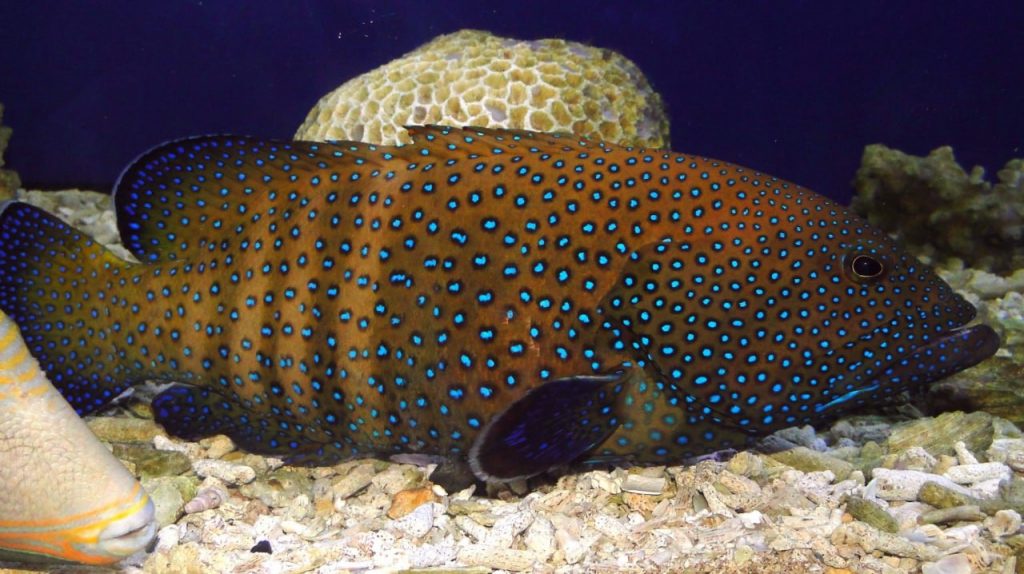Description: Against its brown base, studded with blue ocelli rimmed in black, are wide vertical bands growing lighter towards the posterior part of the body. A paler, peripheral zoneis often visible around the pectoral fin.
Biology: A generally common species. Adults are benthic and benthopelagic in a variety of coral habitats (Ref. 58534, 58302) from tide pools to depths of at least 40 m; preferring the 1 to 10 m reef zone. Juveniles prefer shallow, protected coral thickets. Mature adults are found in social units comprising up to 12 adults, including 1 dominant male and each group occupies a specific area (up to 2,000 sq. m.) that is defended by the territorial male and subdivided into secondary territories, each inhabited by a single female. At times, they may also be solitary. Adults feed mainly on fishes (75-95%) and to a lesser extent on crustaceans. In the Red Sea, they feed early in the morning and late afternoon but in Madagascar, they appear to feed more at night.
Distribution: Indo-Pacific: Red Sea to Durban, South Africa and eastward to French Polynesia and the Pitcairn group, north to the Ryukyu and Ogasawara islands, south to northern Australia and Lord Howe Island.

